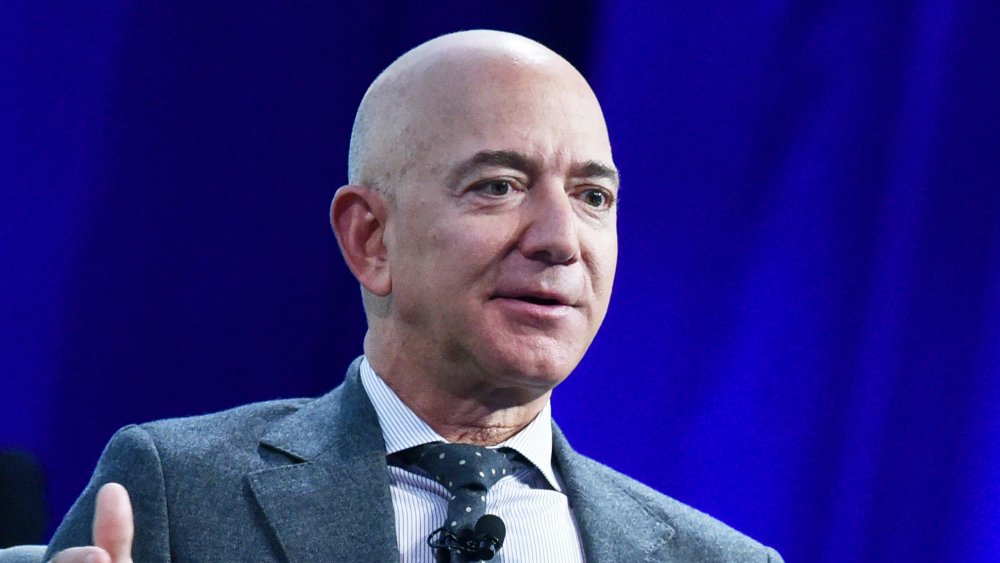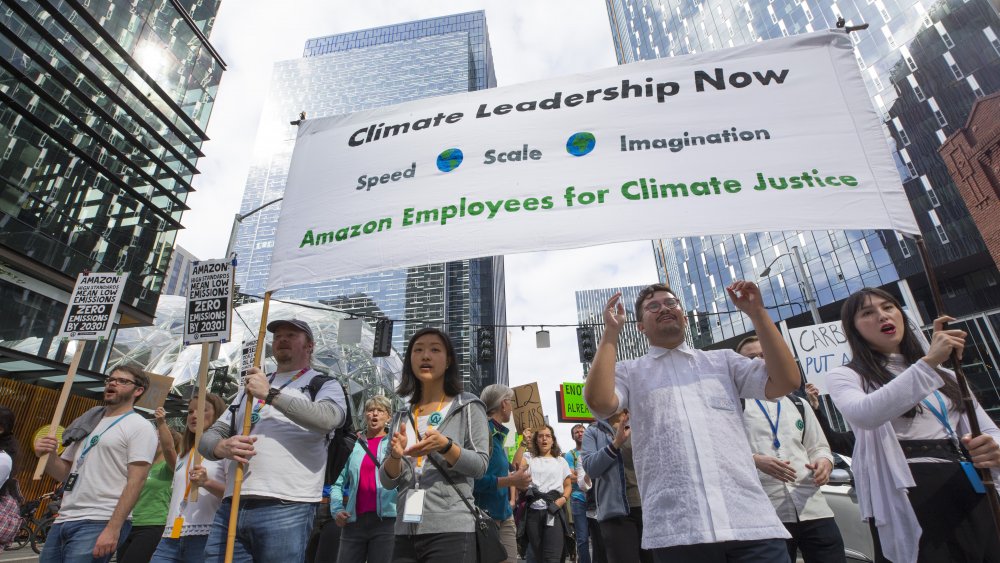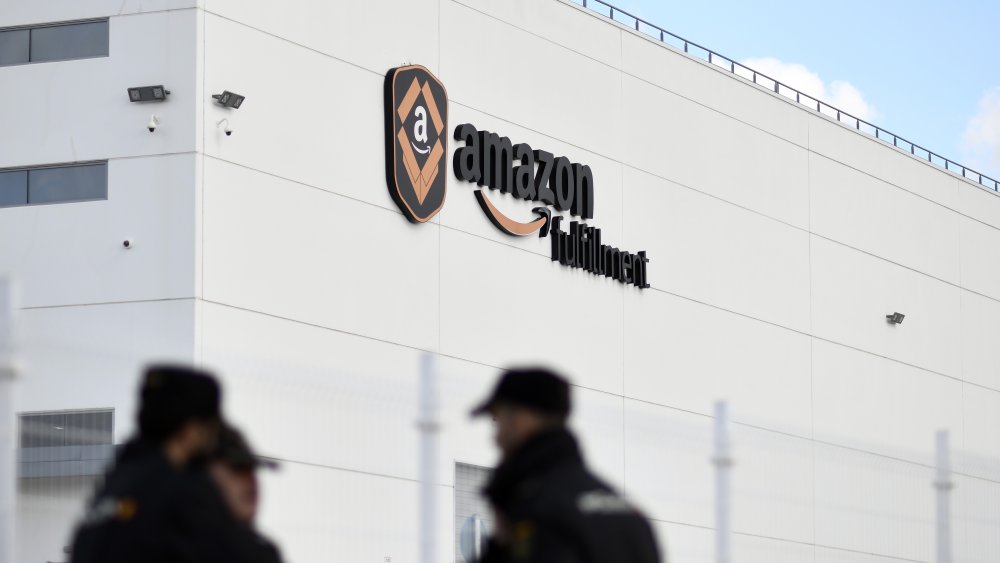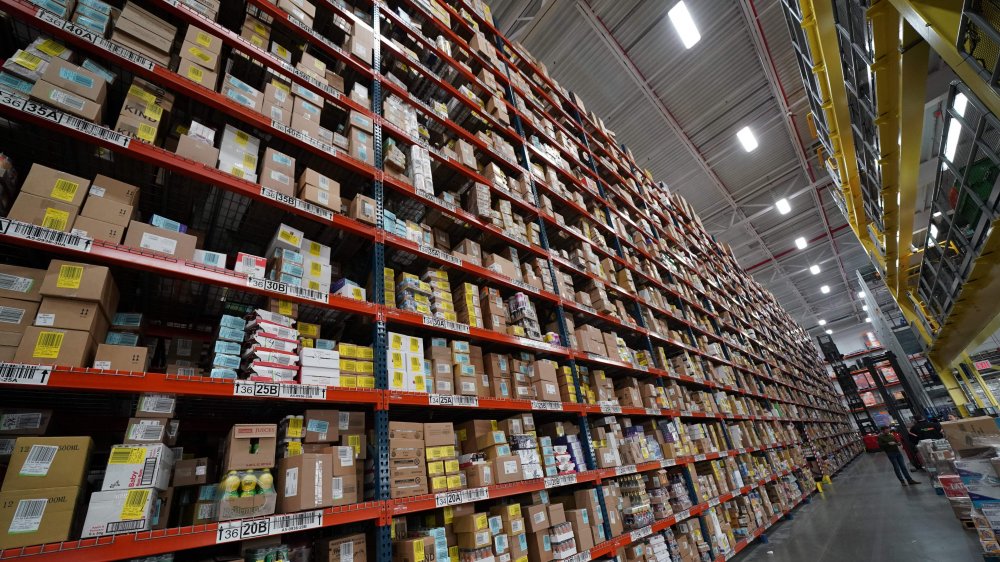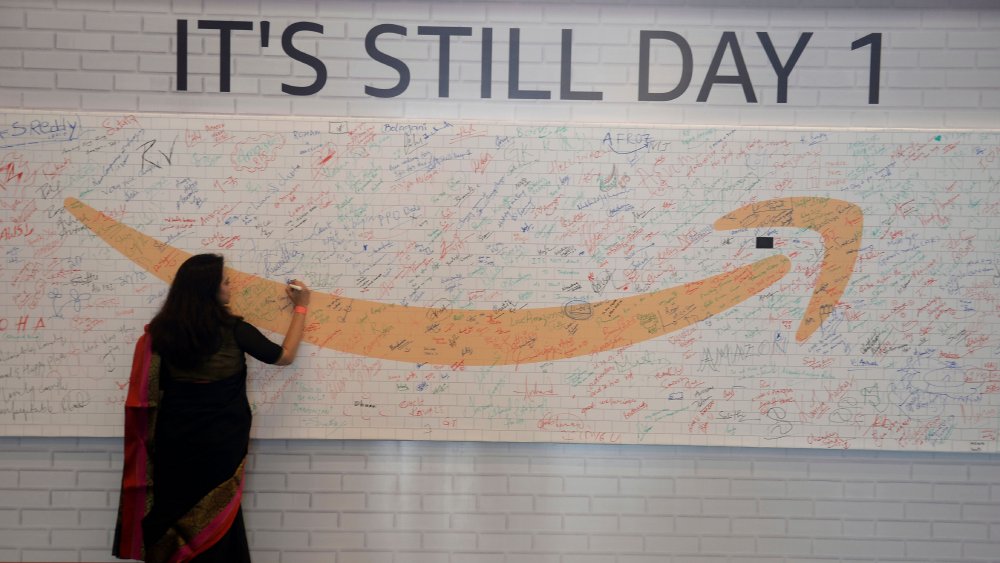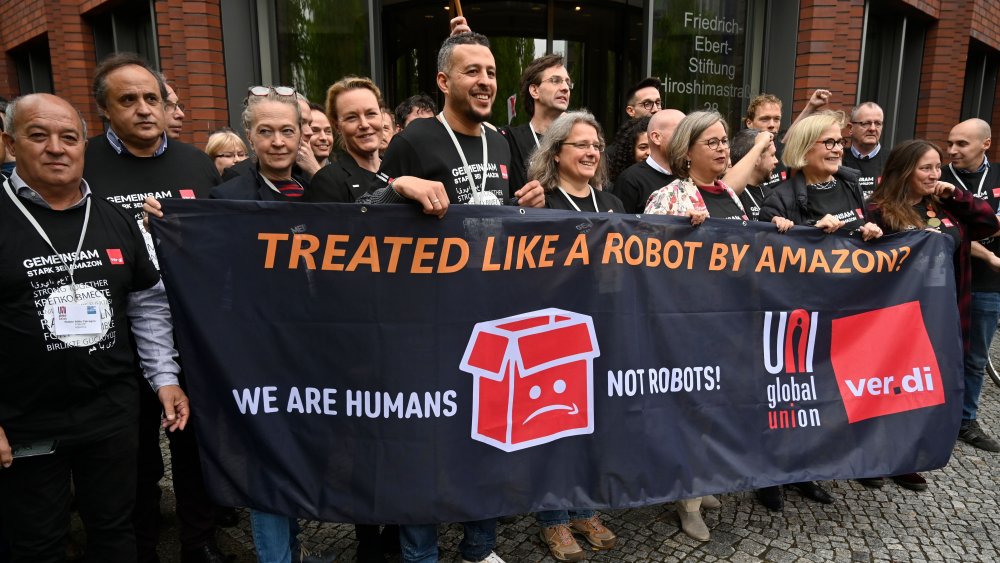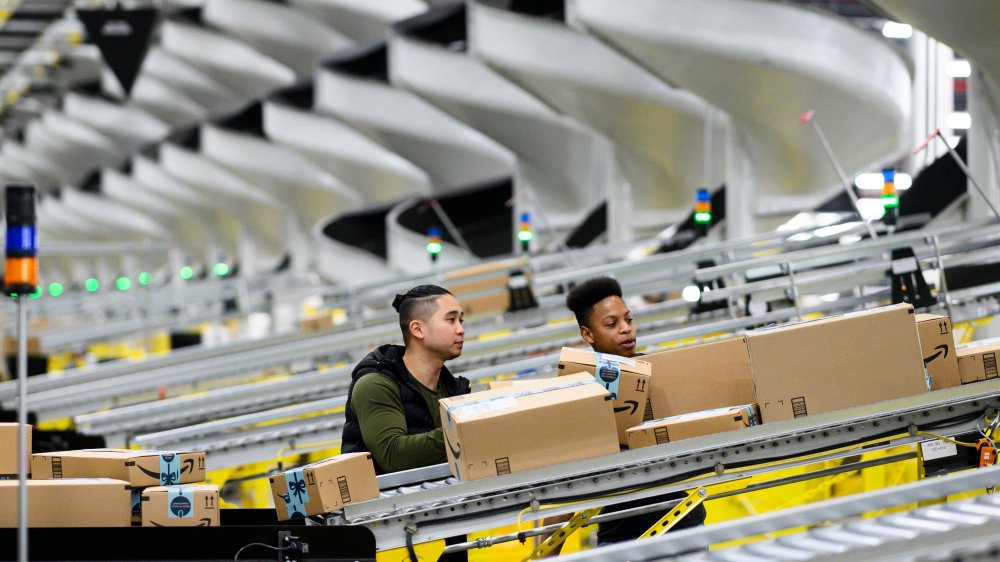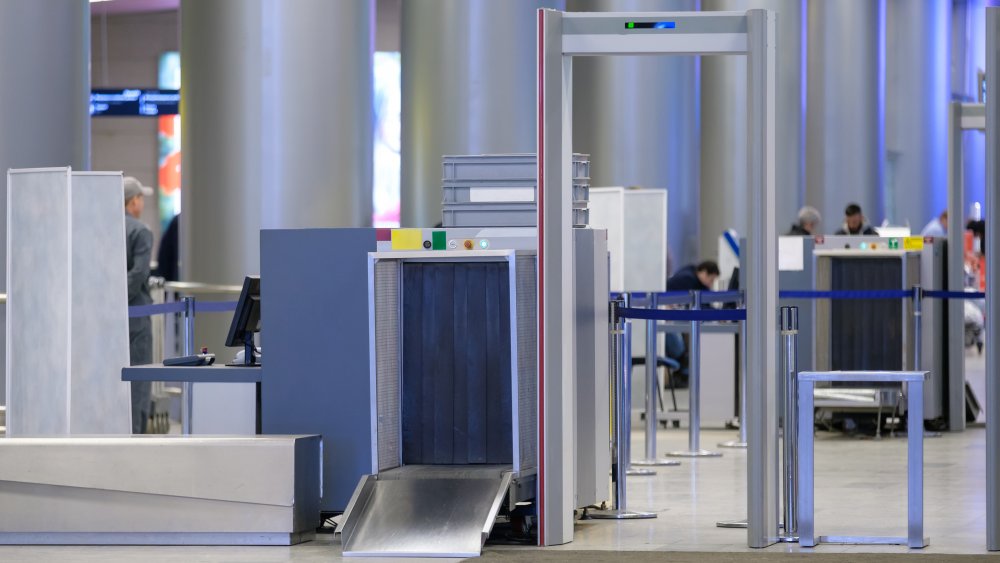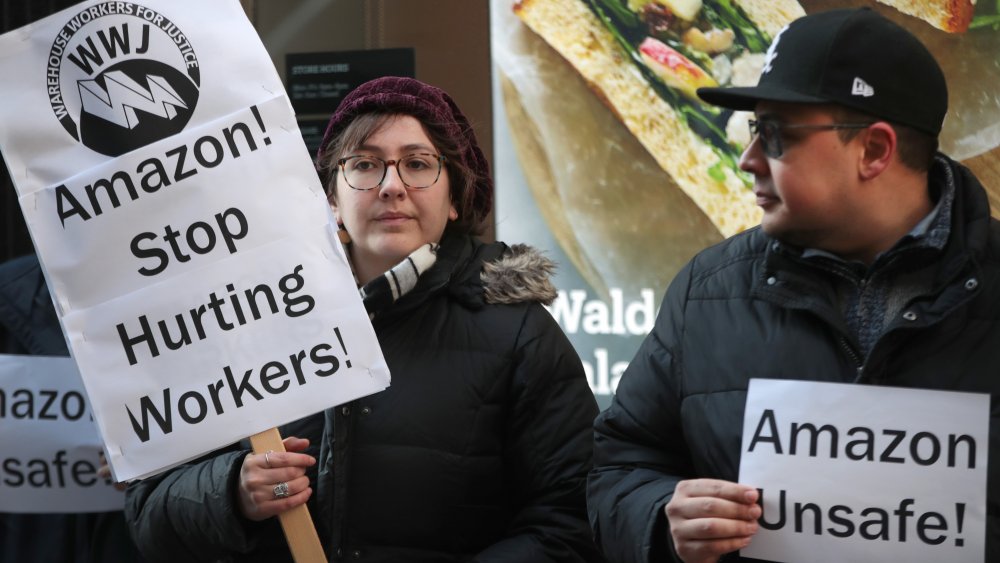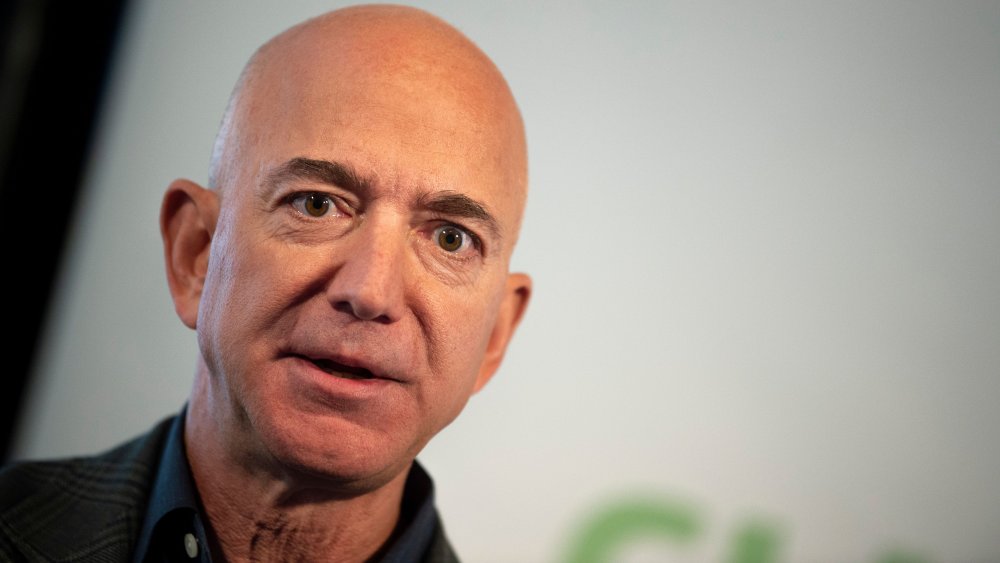The Worst Things About Being An Amazon Employee
Amazon employee horror stories are nothing new, with new ones hitting the web at every turn. It's amazing that a company that had a net income of $11.59 billion in 2019 would have such low employee satisfaction, but it seems to be a common factor in Amazon's history. Employee treatment and harsh working conditions at the number one online retailer have made headlines since the company was founded in 1994, and the trend doesn't show any sign of slowing in the future.
Employee treatment has allegedly been so bad within the company that politicians have been speaking out about the supposed injustices for years, to the point that in 2018, Senator Bernie Sanders proposed the Stop Bezos Act, which would've required large companies like Amazon to put money toward the social services that so many of their employees relied on. Low wages, however, are merely one of the worst things about being an Amazon employee.
Amazon threatens to fire employees who speak out
Amazon has made it pretty clear that they want their employees to keep the company name out of their mouths, and they don't take it lightly when their workers break that directive. In fact, they have a policy that prohibits employees from speaking about the company while being identified as employees, and, according to the Washington Post, there's disagreement on when this clause was added to their communications policies. A group of employee activists known as Amazon Employees for Climate Justice say the company added this policy in September 2019, a couple of months before two members received emails threatening termination of their employment over the clause. As you may assume, the issue regarded AECJ speaking out about Amazon's environmental impact, according to CNBC. Amazon, of course, says the policy isn't new.
Another (former) employee, Gerald Bryson, was allegedly fired over using "vulgar" language, though he claims it was in response to his protesting working conditions amid the COVID-19 pandemic, according to CNET. He wasn't the only protesting employee from the Staten Island facility to be penalized, either. Derrick Palmer was given a final warning for breaking social distance protocol, and Christian Smalls was fired. Three more employee activists were fired recently from an Amazon location in Minnesota. So, you know, suck a lemon or get out.
Amazon fights worker unions tooth and nail
With a company that has over 400,000 employees in the US alone, the fact that Amazon has kept unions from breaching their company's doors in the country verges on insane, but it's not for a lack of trying. Amazon just happens to be winning the anti-labor arms race.
One of the early attempts at "quashing the union menace" was with the closure of a call center following an organizing campaign by the Communication Workers of America, according to Time magazine. It's possible this was a coincidence, but looking at the incident through the lens of the company's anti-union history suggests something different. Since their start in 1994, there have been numerous reports of Amazon distributing union detecting and busting instructions on their inward-facing website for managers. Most recently, in 2018, a training video, detailing how to identify union efforts and scare the crap out of any participating employee by barely skirting legality, was leaked from Amazon's Whole Foods stores.
When so many seriously unsatisfied personnel seem to pop out of the Amazon work pool, fighting against collective bargaining with everything you have is probably the smartest thing you can do, especially when raising that satisfaction level might make Jeff Bezos the slightly-less-but-still-richest man in the world. If not, you might end up with the type of upheaval seen from the unions protesting Amazon in Europe.
Amazon employees work 60-hour weeks during peak season
As any retail worker, online or in the flesh, knows peak season runs roughly from Christmas "cram shopping" until ungrateful gift recipients are finished returning all their "as seen on TV" items — in other words, Black Friday to shortly after Christmas. During this time period, many Amazon employees are forced to work up to 60 hours per week, and that's with the seasonal influx of temporary workers. It doesn't seem that crazy until you look at the level of physical labor that goes into the average Amazon worker's day around the holidays. Some fulfillment center employees, according to Business Insider, report walking up to 20 miles per shift while carrying heavy boxes, with one employee calling it "11 ½ hours of cardio five days a week."
Amazon says they allow workers who have extenuating circumstances to opt out of this peak season overtime, such as those with physical ailments, healthcare appointments, and the like. But, for everyone else in the US, you either work the overtime, or the company can legally terminate your employment as long as they pay you time and a half for any hours beyond a standard 40-hour workweek.
Amazon employees are expected to work during severe weather
If you enjoy driving through terrible road conditions and working in sweltering temperatures, then Amazon might be the place for you. The company says they monitor weather and will close facilities if travel conditions are unsafe for employees, but some of Amazon's workers say otherwise, as detailed by Business Insider. These employees have said that Amazon will excuse late clock-ins but reprimand workers who don't make it in for their scheduled shifts, even when one couldn't see the road under the snow in Minnesota. Another employee camped in his car during a state of emergency due to a blizzard in Kansas so he wouldn't miss his shift.
Regardless of the weather, Amazon keeps running, and that includes triple-digit heat waves, which employees have complained about for years. In 2011, according to the Morning Call, an Amazon warehouse in Pennsylvania stationed paramedics in their parking lot to treat workers suffering from heat-related illness, as the heat index in their warehouse heat index would sometimes reach 110 degrees. These weather-related problems have been commonplace enough for protesting workers to include them in their lists of demands, such as in July 2019 in Chicago and in an April 2019 open letter regarding environmental issues.
Amazon workers get paid a living wage at the cost of other benefits
The company owned by the richest man in the world finally relented to political pressure in 2018 and declared that all of its workers were worth $15 per hour (around $31,000 per year). This caused many Amazon employees to celebrate their new pay raise. But major companies can be sneaky — while champagne bottles were being uncorked and streamers were being hung from the ceiling, benefits were cut behind the scenes. The retail empire holds firmly that their employees have had an increase to their total payment package, as reported by Yahoo! Finance. However, with the slashing of their previous stock options, incentive programs, and bonuses, some Amazon employees believe they're losing out on thousands of dollars per year in a shell game that improved the company's public image and gave the bottom-tier workers nothing in return.
One employee who spoke to Wired says his $1-per-hour wage increase has resulted in a loss of $1,400 per year of benefits, which included Amazon's Variable Compensation Pay that Yahoo! Finance states could increase an employees pay by 8% every month. Removing the stock option plan may have been another big hit, given that the share price had tripled between 2016 and 2018, but figuring out which cup is hiding the ball is half the fun.
Amazon employees' bathroom breaks are on a tight schedule
The trope usually has people peeing their pants out of fright, but Amazon employees seem to have it backwards. According to at least one journalist, they're scared to pee. James Bloodworth went undercover inside an Amazon warehouse for his book, Hired: Six Months Undercover in Low-Wage Britain, where he claims to have seen bottles of urine on shelves from employees who were too scared to lose their jobs for taking a bathroom break. When the Seattle Times followed suit by touring a fulfillment center in Kent, Washington, they didn't see any bottles of urine, but a couple of employees did comment on time-crunched bathroom breaks.
One worker claimed that you could use the bathroom for up to "six minutes tops." Another worker commenting from the Kent facility said she'd been warned "to watch how much time [she's] in the bathroom." A former employee of a facility in Kentucky sued the company for terminating him over his bathroom usage due to his Crohn's disease, according to Newsweek, which he informed Amazon about when he was hired. In a survey by Organise, a worker's rights platform, 74% of employees said they avoid the bathroom so they don't seem unproductive.
Amazon employees say they aren't treated like people
"We are not robots" was a slogan seen on the signs of protesters who gathered outside the Staten Island fulfillment center in 2018, and that sentiment has been echoed around the US. It's easy to feel like a number when you work for a large corporation, and it's easy to feel like a robot when your job consists of doing the same repetitive task day in and day out. But that's only where the complaints start among Amazon workers. Big Brother is always watching, and productivity is constantly monitored. In fact, an anonymous Amazon employee who writes the Guardian's "Amazon diaries" says workers are treated like they're "disposable."
A former employee who was interviewed for a Frontline documentary respectfully disagrees with the idea that they're robots but rather believes they're treated as "part of the data stream" because of the constant pressure they're forced to carry as Amazon increases technological efforts to observe what's happening within their warehouses in minute detail. Regardless, these workers feel they're not seen as human, and this feeling could contribute to the high rate of suicide attempts and other "mental health episodes" that occur in Amazon facilities. According to Newsweek, there were 189 such incidents between October 2013 and October 2018.
Amazon workers are constantly tracked
There are few things worse than living inside an Orwellian dystopia, and if you work at one of Amazon's fulfillment centers, you might find the atmosphere to be eerily similar. Where other companies might track your overall performance for yearly reviews, Amazon tracks their employees constantly to make sure they're hitting their productivity rate and aren't spending too much "time off task." When the Seattle Times visited the Kent facility, there were computer screens that gave updates on employees' hourly productivity, while James Bloodworth's book, Hired: Six Months Undercover in Low-Wage Britain, describes handheld devices that would track and display messages about the undercover employee's rates in the UK warehouse where he worked for a short time.
A letter obtained by the Verge makes this tracking system seem even more outlandish, stating, "Amazon's system tracks the rates of each individual associate's productivity"and automatically generates any warnings or terminations regarding quality or productivity without input from supervisors." Amazon itself says that supervisors have the power to override these automated terminations on a case-by-case basis, but the fact that an algorithm holds employees' futures in its digital hands is still unsettling.
Amazon's quotas push employees to their limits
Amazon has this cool thing known as "rate," which is the rate of tasks an employee should be completing per hour. Then there's "TOT" or "time off task," which is whenever you're not completing job tasks. It's a simple system used to keep employees productive, over-productive, and terminated for not being productive enough, and its demands are far too much for a lot of people to keep up with. For example, workers at the Amazon facility in Staten Island were required to pick up one item every seven seconds to be packaged, according to the Guardian, and, according to Bloodworth, workers had to break other rules, such as running in the workplace, to keep up with their quotas.
As you can imagine, "rate" is usually cited alongside other issues by protesting Amazon employees. Sure, a worker's body might catch up to the sheer athleticism the company seems to require if they're not fired first, but the rate seems to go up every year. A worker who talked with the Verge said his rate went from 120 items per hour to 280 items in three years. By the time he leaves, he'll either being playing for the NFL or bedridden.
Amazon workers have to go through security
Walking into work as an Amazon fulfillment employee can feel like going through security at an airport terminal, since workers are forced to walk through metal detectors when they enter or leave the facility. Thanks to a Supreme Court decision in 2014, the workers aren't paid for their time standing in line, either. If there's anything worse than having an employer who puts zero trust in their employees, it's having one who doesn't pay you for the time it's wasting.
Do you plan on bringing personal items to work? Good luck. According to Ecomcrew, employees aren't allowed to bring most things into the warehouse. You enter through a one-way gate and metal detector, hand over any items (including keys and cell phones) to be put in a locker during a secondary screening process, and go about your day. When you leave, you go back through a metal detector where some people are randomly selected for a full-body search. But that's just the price you pay to be an Amazonian.
Amazon employees have a good chance of getting hurt
A high risk of injury isn't something you want to see in a job description, but it seems to come with the territory if you work in an Amazon fulfillment center. At least, that's what the numbers say – Reveal found that Amazon's incident rate was more than double (with some specific facilities much worse) that of the industry standard in 2018. Amazon says these numbers are high because of their diligence in reporting incidents, but with employees calling their facilities names like "the meat grinder" and claiming that a visit to the onsite medical staff is the first step to losing one's job, it's hard to take the company's claims seriously.
Amazon's integrity has been called into question further as a result of Amcare, the company's in-house medical response team, being cited by OSHA on several occasions for providing inadequate medical care to injured employees and working beyond their scope of practice, according to the Intercept. The Intercept went on to conduct their own investigation and found that Amcare had several more issues, from disobeying government and Amazon regulations to blatantly disregarding medical problems, so who's to say what the incident numbers actually are?
Jeff Bezos personally makes Amazon employees' lives difficult
When it comes to running a company, Jeff Bezos takes the type of hands-on approach that other CEOs tend to admire and his workers tend to hate: micromanaging. A Quora post from an Amazon employee speaks of a thing called "Jeff demands," where someone working on a project will be ripped away to work on something different because Bezos decided that's what's best. What Jeff wants, Jeff gets, and this micromanaging is nothing new. Publications like Forbes, the Verge, and Business Insider have all written about it from different viewpoints.
And where micromanaging can be seen as beneficial depending on who you are, it's difficult to believe Bezos' tendency to insult his employees is helpful. Everything from "I'm sorry, did I take my stupid pills today?" to flaunting his status as CEO have been used by Bezos to belittle employees, according to Business Insider, which probably doesn't make for the most healthy of workplaces (or any other form of human interaction, for that matter).
